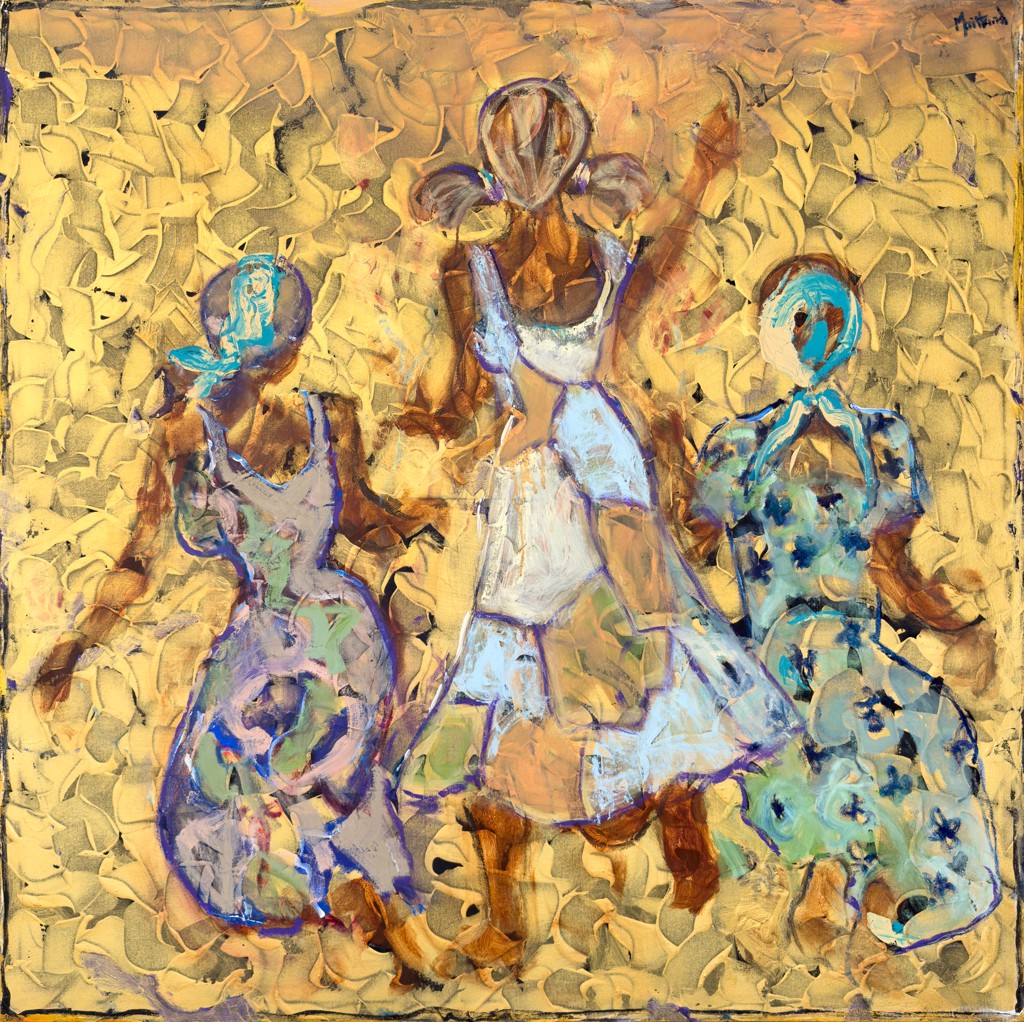
John Maitland Biography
John Maitland, born in England in 1956, is a figurative expressionist celebrated for emotive depictions of people in vast, textured Australian landscapes. Influenced by Impressionism and Indigenous art, his works combine observation and imagination. Maitland’s unique vision has earned global recognition, with paintings held in major public, private, and corporate collections worldwide.
John Maitland was born in Newcastle Upon Tyne, England, and at age 15 was awarded a scholarship to study art at Kings College. His work has been significantly impacted by the European impressionist movement, as well as the raw character of Indigenous art. Maitland often paints people set in vast landscapes, reflecting his own awareness of the unique spirituality, grace and unobtrusiveness of various cultures in their natural environment. For his unique style combining careful observations with a vivid imagination, John Maitland is seen by some as being “one of Australia’s most exciting artists”. His works are a part of many important Australian and international collections. John Maitland remembers the first time he opened a schoolbook in Australia as a child. It had a brown cover with matching brown pictures on the inside which were so boring to him. He wrote the country off as utterly uninteresting. However, a few years later he stumbled upon the cover of a travel brochure about Australia showing a beautiful seafood platter, boasting a red emperor fish. He became captivated by Australia’s colours and its people. Its golden landscape paired with silvery sunsets, the grace of the Indigenous people and not to mention their unique and dynamic art were a source of great inspiration for Maitland. In the year 2000, when he saw the Central Desert art exhibition at the Art Gallery of New South Wales, he knew that Indigenous art and culture would become an influence in his artistic practice. By observing the looseness, depth, drama, and textural quality of the works, the artist developed his own tools to reimagine his works and capture the very soul of the Australian landscape and its people. John Maitland was also greatly influenced by many European modern artists, namely Degas for his photographic compositions and Gaugin for his raw and uninhibited representation of local culture. For Maitland, the numerous encounters with works of the impressionist and fauvist movements were cathartic and led him to pursue his unique vision. Many of Maitland’s works pay tribute to these two modern masters and visibly acknowledge their strong impact on the artist’s work. Having established a distinct visual language, his work began to strike a chord with collectors and critics. He won important competitions and art prizes, and his work was acquired by many private and public collectors, as well as by corporations such as Nestlé. Maitland’s works also attracted significant attention from Australian buyers. His works found their way into important domestic and international collections. He has been called a modern Matisse and has been dubbed “one of Australia’s most exciting artists” (John Norris – Director, Prime Arts Publishing UK). Technique and StyleJohn Maitland’s style is representative of figurative expressionism, with the rich palette and unconstrained brushwork often seen in impressionist works. In fact, he identifies with the main goal of all impressionists – to depict things not as they are, but as the artist perceives them. Therefore, while documenting the Australian landscape and its people closely, his work is always a combination of reality and liberal doses of creative licence and fertile imagination. His paintings are conceived outdoors, and then exposed to weather, Maitland’s surfaces erode and acquire an aged, weathered appearance. Forgoing preparatory sketches, he applies rich colours directly on the canvas in broad and sweeping brushstrokes. This way, the paintings gain a distinct texture, with gentle emotive nuance. Maitland is a professional people watcher. He observes the subjects of his paintings in relationship with their movement and surroundings. His decorative depictions of people and animals, set amidst mystical landscapes are painted with a varying degree of detail. They range from rather three-dimensional compositions to almost pure abstraction. Many times, the figures are reduced to repeating symbols woven into a rich tapestry of textures. The compositions are often paired with loose geometric shapes or organic patterns, which are a direct reference to Indigenous art. In some of his series, Maitland interprets famous motives of Gaugin and Degas using his own signature style. For example, instead of the photography-like quality of Degas’s works, Maitland’s ballerinas are painted as if in a hurry, leaving plenty of ragged edges on their skirts and ribbons. They are not always trim and perfect and may have tired feet having already performed on that given day. And that is exactly what makes John Maitland’s paintings stand out. He likes to pick at imperfections, and depict them with gentleness and elegance. He believes people respond to the tension between beauty and imperfection and wants the viewers to be able to see their own reality in the paintings, to relate their personal stories to the evocative scenes on his canvases. Collecting NotesThe unique charm in John Maitland’s work lies in his characteristic depictions of his adopted home country – Australia. He still paints with the eyes of a foreigner in love with the land and its people, much like Gaugin documented the scenes of his Tahitian adventure. John Maitland is a highly acclaimed artist, whose works are held in private collections throughout Australia and New Zealand, Asia, the South Pacific, United States, Canada, Europe and the United Kingdom, as well as a number of foreign embassies, and even the Houses of Parliament at Westminster. His work is also represented in galleries throughout England, Ireland, Europe, USA, Canada, Africa, New Zealand and of course with us at Wentworth Galleries in Sydney, Australia.
Select Archive Works

